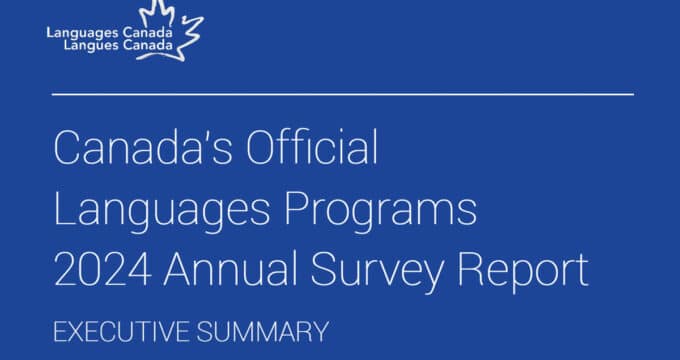Number of Indian students heading abroad increases dramatically over past decade
The number of Indian students going overseas to study rose a stunning 256% – from 53,266 to 189,629 – in just nine years (2000–2009) according to a study called “Indian student mobility to selected European countries: An overview” by researchers at one of India’s top business schools, the Indian Institute of Management–Bangalore. This is welcome news for the many institutions in Europe and North America that are the main recipients of Indian students, but it is also cause for concern in some quarters in India. A different study done by the Associated Chamber of Commerce and Industry of India (ASSOCHAM) estimated that the hundreds of thousands of Indian students now studying abroad cost India as much as US $17 billion a year in lost revenue. We should note that the ASSOCHAM study appears to significantly overestimate the volume of outbound students at “over six lakhs” (e.g., over 600,000). Other sources, such as the UNESCO Institute of Statistics and the Institute of International Education, put the number of Indian students studying abroad in 2010–2011 in the range of 200,000, which is much more in line with the estimates we see in the IIM-Bangalore report.
Where Indians study abroad and why
The IIM-Bangalore study, conducted by Rupa Chanda and Shahana Mukherjee, reveals fascinating details about where Indian students are choosing to study when they go abroad, and why:
- The US remains the most popular destination for Indian students and is still perceived to provide the most prestigious and valuable credentials of all study abroad destinations. But it has recently lost some ground; the US still attracts more than half of all Indian students going abroad to study, but it saw its share of students from this country drop from 73.4% in 2000 to 53.6% in 2009.
- The UK overtook Australia in 2009 to become the second-most important destination for Indian students (after the US, the UK attracted 17% of all Indian students studying abroad in 2009). But the study contends that the UK places “exorbitant” financial demands on Indian students and that this, coupled with other countries’ growing attractiveness as well as the UK’s tightening of visa regulations, will cause the UK problems in recruiting in the near future.
- Germany and France, like the US, have lost some share of Indians since 2000, but they are expected to gain share in the expected event that the UK will lose some in the coming years (see previous bullet).
- Countries like Sweden, Denmark, Italy, and Ireland are now in Indian students’ consideration sets. The study observes that Indian students are looking at countries where “education is considerably cheaper and part-time jobs are easier to secure.” But it also says that Indians are less willing than other international students to look outside the big four or five leading study abroad destinations, and that emerging countries trying to recruit more Indian students will have to work on their visibility in this market.
- Most of the Indians studying abroad are doing so at the graduate level, with the most popular fields being business or STEM-related (science, technology, engineering, and mathematics).
- Most of them rely on scholarships and/or other financial assistance to fund their education, but the study notes that many Indian students pursuing degrees abroad are taking on heavy financial burdens and debt to do so.
Reporting on the study, The Economic Times also noted:
“The profile of the internationally mobile Indian students is changing. Traditionally, north Indians flocked to Europe for higher education, but increasingly, students from Gujarat as well as the southern states are making a beeline for institutes in those countries …. And when it comes to scholarships and grants, most of them are bagged by students from southern India.”
As for why so many Indians are choosing to go abroad for education, Chanda and Mukherjee argue that along with (a) a perception that foreign degrees translate into better employability and (b) rising income levels among middle-class families in India, India’s educational capacity remains limited:
“An important reason for many Indians choosing to study abroad is the lack of good institutions in India and growing competition for limited seats amongst the existing institutes. Very few universities in India provide good quality education and thus the challenge of securing admission in them becomes more daunting each year. An example of this is Delhi University, which has consistently set challenging cut-offs for admission and made headlines in 2011, with a 100% cut-off required for admission into Sri Ram College of Commerce. Though the cut-offs vary across subjects, most subjects require students to score in excess of 80%, with the cut-offs for popular subjects like economics ranging between 90% to 98%. Similarly, an engineering aspirant has lower than a one in 50 chance of securing admission into the highly reputed Indian Institutes of Technology. Moreover, the reservation policy reduces the availability of seats to ‘general’ category students, thereby weakening the prospects of a majority of students. Such stringent and often unrealistic requirements put students through extreme levels of pressure and lower their chances of attaining quality education.”
Brain drain effects
The study has prompted discussion in India about how to redress the significant financial loss – not to mention talent drain, when Indians remain in foreign countries to work after completing degrees there – caused by the great number of Indians getting their education abroad. ASSOCHAM wants “more and more quality educational institutions to be set up in India on the lines of IIT and IIM in order to restrict the outgo of students.” They also say “good quality foreign universities should be encouraged to [set up shop in] India.” Both of these prospects for expanding Indian education capacity, however, appear to be constrained by strict government controls. As India continues to wrestle with the need to increase capacity, the study’s findings underline important opportunities and considerations for foreign education recruiters and national educational policy makers. Currently, Indians are mostly looking at the US and UK as study abroad destinations, but well-communicated advantages in the form of scholarships, visa policies, and opportunities to work during and after degree-completion could easily move them to consider other options in North America and Europe (e.g., Canada, Germany, France, Italy, Denmark, Sweden, Ireland).


















